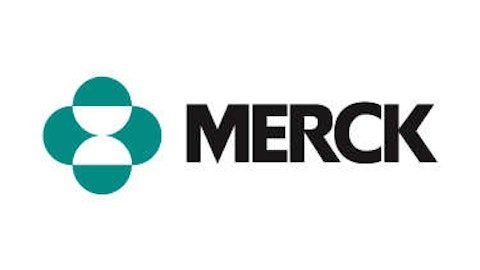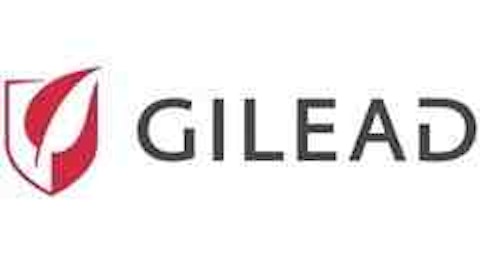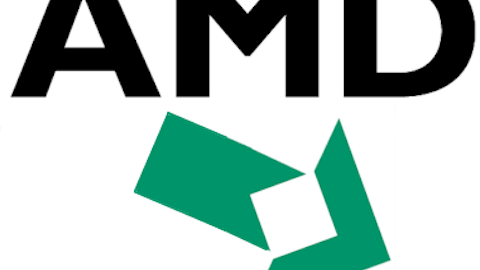There are few, if any, businesses in the world where innovation isn’t the top priority. Perhaps no sector, though, is more reliant on new ideas and development than the biotechnology industry. If it weren’t for some 151,000-plus ongoing clinical trials in 184 countries, we wouldn’t have the improving level of medical care that we see today.

Source: thinkpublic, Flickr.
But, we’re far from finished. There are thousands of diseases and disorders left to be treated and an immeasurable number of discoveries yet to be made. This also means that there are plenty of existing drugs just waiting to be replaced by newer and potentially better therapies. Today, I propose to go out on a limb and point out what I feel are three drug classes that could be on their way to becoming obsolete within the next three years, and what up-and-coming medications may replace them.
Interferon-accompanied hepatitis-C therapies
Hepatitis-C is a liver disease that is estimated to affect about 150-million people worldwide, and kills around 350,000 people every year. In less chronic forms of the condition, it can lead to an illness that lasts a few weeks, to more serious forms of the condition (which is more common), which often leads to cirrhosis of the liver and/or liver cancer.
The current standard of treatment for hepatitis-C is Vertex Pharmaceuticals Incorporated (NASDAQ:VRTX)‘ Incivek, and Merck & Co., Inc. (NYSE:MRK)‘s Victrelis. Both Incivek and Victrelis are given orally, and belong to a class of drugs known as NS3/4A protease inhibitors – yet neither drug is a monotherapy. Both drugs were approved by the Food and Drug Administration to be given with an intravenous interferon and a ribavirin. While moderately effective at delivering a sustained virologic response after 24-weeks (i.e., removing all detectable levels of the virus), interferon has a tendency to give patients flu-like symptoms up to, and somewhat after, the duration of the treatment. In this case, up to 48 weeks!
What’s going to replace it? I would surmise that the approval of Gilead Sciences, Inc. (NASDAQ:GILD) sofosbuvir and AbbVie‘s direct-acting antiviral combo are both coming within the next year.
Gilead Sciences, Inc. (NASDAQ:GILD)’s all oral and interferon-free sofosbuvir showed incredible efficacy in all four late-stage trials, demonstrating superiority over the placebo across the most common and lesser common genotypes. In a mid-stage trial, sofosbuvir even produced a perfect SVR after 12 weeks of 100% (25 out of 25 patients). For AbbVie, it’s been much of the same. Although sofosbuvir is currently being reviewed by the FDA, AbbVie’s DAA combo has received the breakthrough therapy designation while heading into phase 3 trials, which should speed up its approval process should the results stay consistently positive. In its mid-stage trials, AbbVie’s combo produced an SVR of 97%, although it was tested on a larger patient population of 79 people.
With no interferon administered, these hep-C agents come with far fewer side effects, and they also happen to be considerably more effective based on clinical study SVR. I believe they’re a good bet to become the standard of care in treating hep-C almost immediately, assuming they’re approved by the FDA.
DPP-4 inhibitors
Over the years, we’ve witnessed a big transition in the way type 2 diabetes is treated. In recent memory, few treatments have proven as successful as DPP-4 inhibitors, like Merck & Co., Inc. (NYSE:MRK)’s Januvia and Bristol-Myers Squibb and AstraZeneca‘s Onglyza.
DPP-4 inhibitors work by increasing incretin levels which, in turn, inhibit the release of glucagon, and helps to reduce glucose levels and improve overall glycemic balance. This class of drug, like many of its predecessors, works in the liver and the pancreas to produce less glucose and more insulin. The downside of DPP-4 inhibitors, though, is that they’ve been linked to some potentially serious side effects, which brings into question the safety of their long-term use, including pancreatitis, kidney problems, and severe allergic reactions.
What’s going to replace it? The latest and greatest advancement in diabetes 2 treatments is already here in SGLT-2 inhibitors. Rather than working in the liver and pancreas, SGLT-2 inhibitors work in the kidneys to block the absorption of glucose in the body, and allow a patient to flush excess glucose out of the body through their urine to maintain glycemic balance. Furthermore, the safety profile of SGLT-2 inhibitors appears to be more favorable and, whereas DPP-4 inhibitors tend to be weight neutral to the patient, SGLT-2 inhibitors actually induced weight loss in most patients, although they aren’t indicated for weight loss.
In the U.S., Johnson & Johnson‘s Invokana is the only SGLT-2 inhibitor currently approved by the FDA. However, that could change soon with AstraZeneca and Bristol-Myers’ Forxiga expected to get a ruling on an approval from the FDA in Jan. 2014. Forxiga was actually denied in Jan. 2012 because of concerns of elevated bladder and breast cancer incidence in trials, so it should be interesting to see if J&J will soon have a new competitor.
Ultimately, with a favorable long-term safety outlook, and more intriguing weight control aspects than DPP-4 inhibitors, I can see SGLT-2 slowly pushing DPP-4 inhibitors into obsolete status over the next three years.
Dexferrum injection as a treatment for dialysis-induced iron deficiency
Unlike the previous two drug classes, this drug is in a class of its own. Dexferrum is an iron injection given to dialysis patients whose iron deficiency is caused by the dialysis process. It’s been a standard of care treatment for as long as I can recall, but it also comes with potentially serious side effects, which can include anaphylactic-type reactions, blood clots, and iron toxicity.
What’s going to replace it? Last week, Rockwell Medical Inc (NASDAQ:RMTI) reported its late-stage results for its second of two studies, which demonstrated that its soluble ferric pyrophosphate, or SFP, which is administered within the dialysate, met its primary and secondary endpoints. The primary endpoint was a statistically significant change in hemoglobin levels from the beginning of treatment to the end, while its secondary endpoints include hemoglobin and reticulocyte maintenance, and an increase in serum iron pre-to-post treatment, without an increase in ferritin.
What’s notable about Rockwell Medical Inc (NASDAQ:RMTI)’s SFP is that, when given within the dialysate as opposed to dexferrum given separately via an injection, there was little difference between the safety profile of the placebo and SFP, save for one factor: there were no instances of anaphylaxes reported in trials. With an improved safety profile relative to the current standard of treatment, assuming SFP is approved by the FDA — a new drug application filing is expected early in 2014 — it has a good shot at becoming the new standard of treatment in iron-replacement therapy for dialysis patients.
The article 3 Drug Classes That May Become Obsolete Within 3 Years originally appeared on Fool.com and is written by Sean Williams.
Fool contributor Sean Williams has no material interest in any companies mentioned in this article. You can follow him on CAPS under the screen name TMFUltraLong, track every pick he makes under the screen name TrackUltraLong, and check him out on Twitter, where he goes by the handle @TMFUltraLong.The Motley Fool owns shares of, and recommends Johnson & Johnson. It also recommends Gilead Sciences and Vertex Pharmaceuticals.
Copyright © 1995 – 2013 The Motley Fool, LLC. All rights reserved. The Motley Fool has a disclosure policy.




